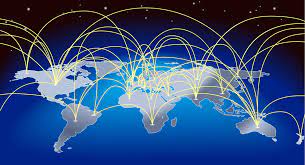Introduction
In an increasingly interconnected world, international trading has become a cornerstone of economic growth and global prosperity. As businesses expand beyond their borders, the dynamics of international trade play a pivotal role in shaping the economic landscape. This content aims to provide a comprehensive overview of international trading, delving into its key components, challenges, and the impact it has on nations and businesses worldwide.

Trading
- Definition and Basics:
International trade refers to the exchange of goods, services, and capital across national borders. It allows countries to specialize in the production of goods and services where they have a comparative advantage, leading to increased efficiency and overall economic growth. - Trade Balances:
Understanding trade balances, including trade surplus and deficit, is crucial. A trade surplus occurs when a country exports more than it imports, while a trade deficit occurs when imports exceed exports. - Key Players:
Explore the major participants in international trade, from multinational corporations to small and medium enterprises. Governments also play a vital role in shaping trade policies and regulations.

- Trade Agreements and Organizations:
- Bilateral and Multilateral Agreements:
Investigate the impact of bilateral and multilateral trade agreements on international commerce. Examples include NAFTA (North American Free Trade Agreement) and the WTO (World Trade Organization). - Customs Unions and Free Trade Areas:
Examine how customs unions and free trade areas facilitate smoother trade by reducing tariffs and trade barriers among member nations.
- Challenges in International Trade:
- Tariffs and Trade Barriers:
Discuss the impact of tariffs, quotas, and non-tariff barriers on international trade, exploring how they can hinder or distort the flow of goods and services. - Currency Fluctuations:
Explore the challenges posed by currency exchange rate fluctuations, including how they affect the competitiveness of exports and imports. - Political and Regulatory Risks:
Delve into the potential risks associated with political instability, regulatory changes, and geopolitical tensions that can disrupt international trade.
- Technological Advancements in International Trade:
- E-commerce and Digital Platforms:
Investigate how technological advancements, particularly in e-commerce and digital platforms, have transformed the landscape of international trade, enabling businesses to reach global markets more efficiently. - Blockchain and Supply Chain Management:
Explore the role of blockchain in enhancing transparency and traceability in supply chains, reducing fraud, and improving overall efficiency in international trade.
- The Future of International Trade:
- Globalization Trends:
Analyze emerging trends in globalization and how they are shaping the future of international trade, including the rise of new economic powers and the impact of climate change considerations on trade practices. - Sustainable and Ethical Trading:
Explore the growing importance of sustainable and ethical trading practices, as consumers and businesses increasingly prioritize environmentally friendly and socially responsible approaches to international commerce.
Conclusion:
In a world where borders are becoming more porous and communication is instantaneous, international trade continues to be a driving force for economic growth and cooperation. Understanding the intricacies of this complex system is essential for businesses, policymakers, and individuals alike as they navigate the challenges and opportunities presented by the global marketplace.



